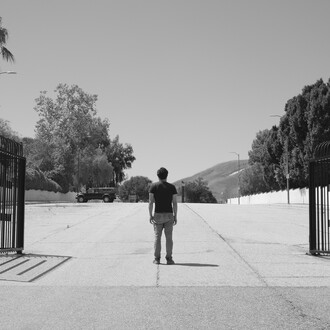There are images that seem to arrive from elsewhere. Traces that hesitate between visibility and disappearance, between their first existence and their second life as memory. Ghost currency, Catarina Dias’s first exhibition with Jahn und Jahn in Munich, unfolds itself in this uncertain territory where images no longer describe the world. Rather, they haunt it. They appear fragile, translucent, touched by time. Carriers of something that resists both possession and clarity.
The exhibition moves through a field of remnants, among fragments of magazines, detached symbols, dislocated signs that return in new constellations. Catarina Dias approaches these remains not as ruins to be archived but as living matter to be reconfigured. The image, once emptied of its original meaning, becomes available again to transformation. From what has been thrown away, a new visual language quietly emerges.
Each work results from a process of layering, erasure, and re-inscription. Fragments are scanned, multiplied, and recomposed until they acquire a pulse of their own. This operation is followed by a tactile intervention - folds, frictions, gestures that unsettle the printed surface. This dialogue between the mechanical and the manual, the distant and the intimate, gives the work a peculiar vibration: an image that is never fixed, always oscillating between becoming and disappearance.
Words often appear suspended within these surfaces, not as captions or explanations, but as interruptions, shadows of meaning. They echo through the visual field like fragments of a language that has forgotten its syntax. In their opacity, they open another dimension. One in which language and image exchange roles, each one borrowing the uncertainty of the other.
To look at these works is to experience delay. Nothing yields immediately. The eye must adjust to the silence between fragments, to the suspended rhythm that rules their composition. Catarina Dias seems to suggest that the image today can only survive through hesitation, by refusing the acceleration that surrounds it, by insisting on slowness as a form of resistance.
In Ghost currency, value circulates through absence. What we hold is not an image of the world, but its residue, a resonance that lingers after the visible has faded. These works do not seek resolution; they remain open, porous, insistently unfinished. Their strength lies in this suspension, in the fragile moment before meaning hardens into certainty. Here, the image breathes again as vibration, as an echo that continues to move long after it has disappeared.
(Text by Filipa Correia de Sousa)
















